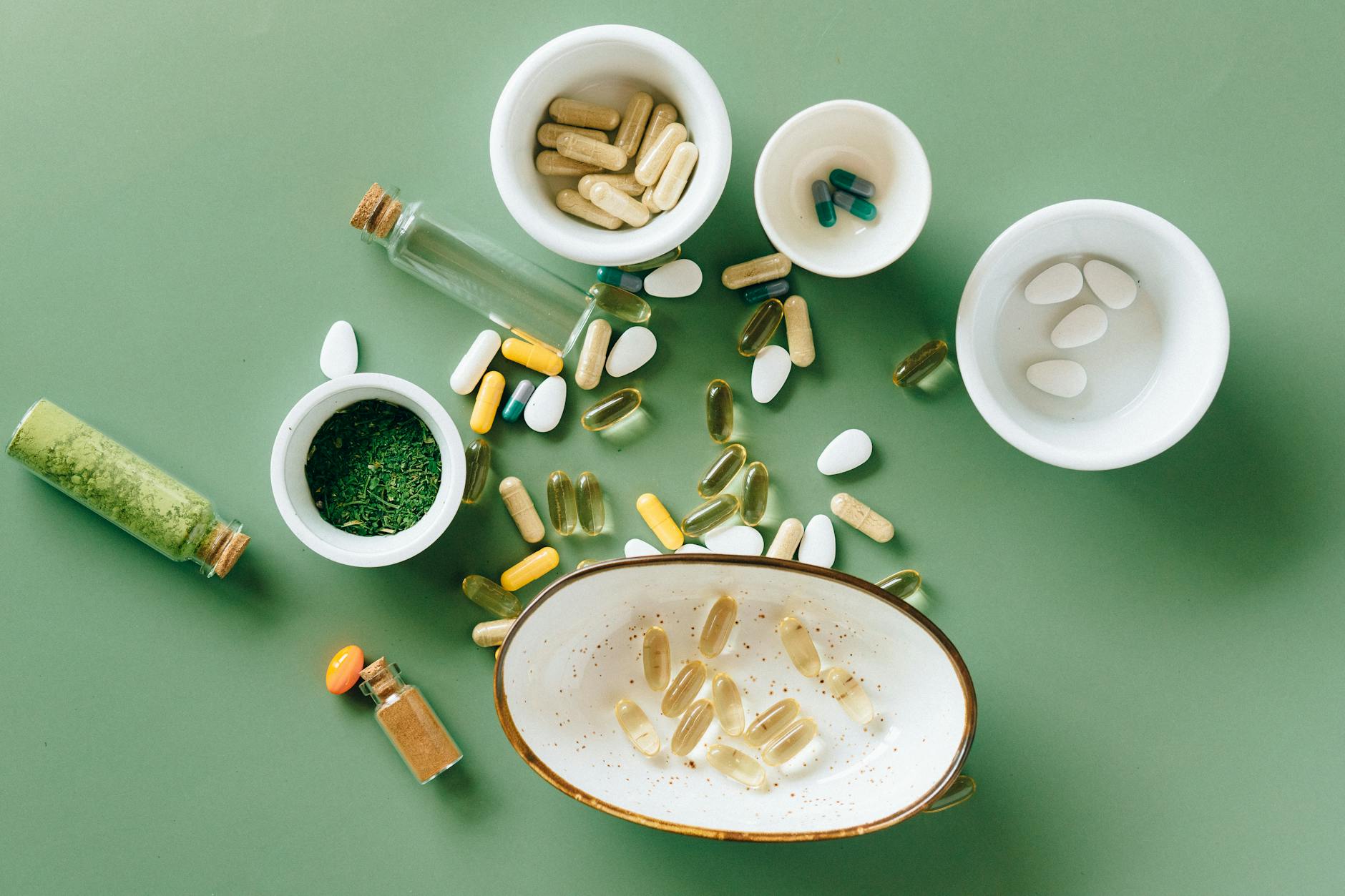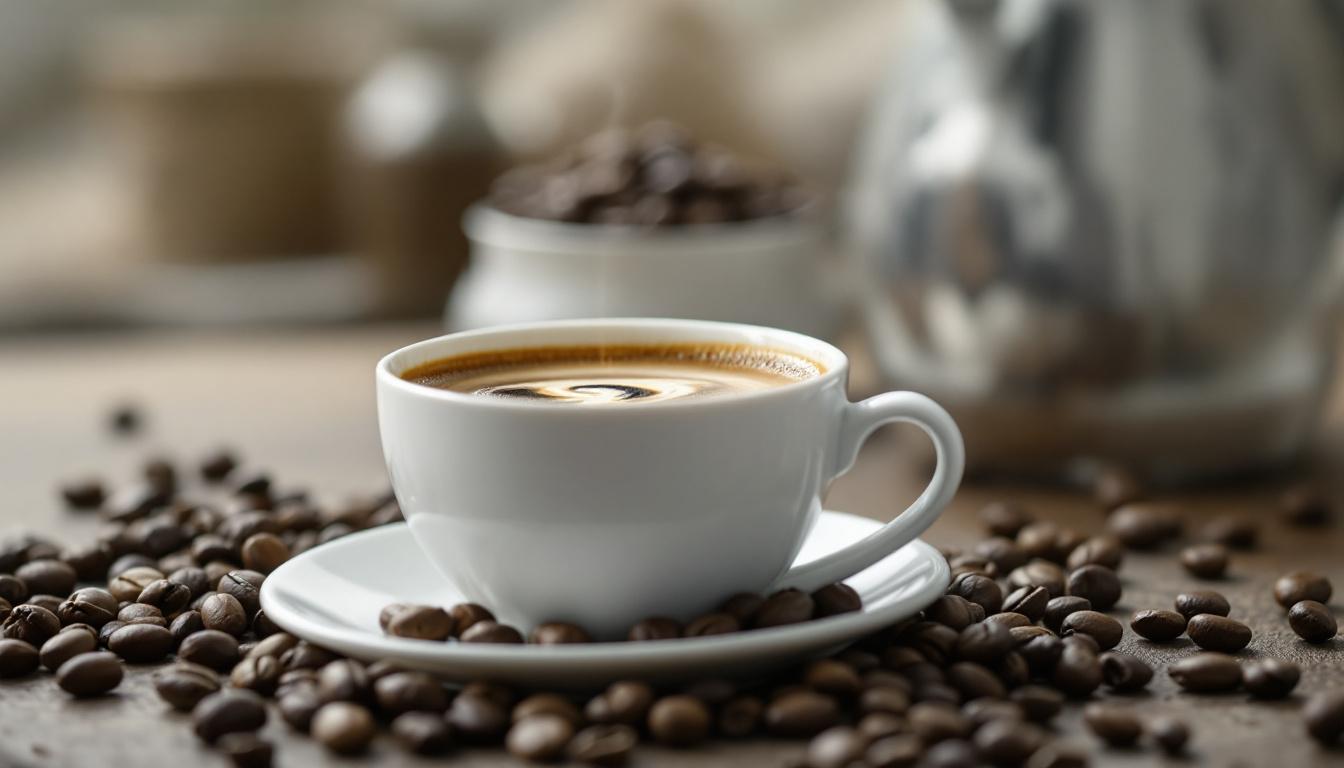The Surprising Truth Explained
Kopi luwak coffee is so expensive because of its rare production process and limited supply. Each bean passes through the digestive system of a Civet, which changes its flavor and makes it unique.
Because collecting these beans is slow and takes place in select regions, the price stays high.
For coffee fans interested in wellness, enjoying specialty drinks like kopi luwak or adding safe supplements such as Java Burn to your routine can be part of a healthy lifestyle.
The key is understanding what you’re drinking and how it fits into your daily habits.
Whether you’re brewing a rare cup or mixing in a supplement, both choices let you personalize your coffee experience and look after your well-being.
Key Takeaways:
- Kopi luwak coffee costs more because it’s rare and handcrafted.
- The production is limited and involves a special process with civets.
- High-quality coffee and supplements like Java Burn can fit into a wellness plan.
- Knowing what’s in your cup is smart for both flavor and health.
- It’s possible to enjoy coffee in new ways while putting your health first.
What Makes Kopi Luwak Coffee So Expensive?
When people first ask, “why is kopi luwak coffee so expensive?” the answer always goes back to the steps that make it unique. Kopi luwak’s price isn’t just about taste—it’s tied to an unusual process, how much (or little) is produced, and the effort it takes to harvest each bean.
Add in questions around animal care, and you begin to see why sipping this coffee is as much about the story as the flavor. Let’s break down what really drives the price.
The Unique Journey: From Civets to Cup
Kopi luwak starts with an unexpected step: wild or farmed civets (a small, cat-like animal) eat ripe coffee cherries.
These animals have an instinct for choosing only the best fruit. The cherries pass through their digestive systems, where a fermentation process happens.
The beans are excreted, cleaned, dried, and roasted—giving them a mellow, less acidic taste that many coffee lovers crave.

Curious why this journey matters so much?
- The beans’ trip through a civet’s digestive tract changes their chemistry. Proteins are broken down, which reduces bitterness and makes a smoother cup.
- Every single bean must be found and collected from the wild or farm environment, making each harvest slow and careful.
- There’s a limited amount of beans, so each cup reflects both nature’s role and human patience.
This rare method makes the process as interesting as the java itself. For more on the step-by-step process, check out Behind Luwak Coffee Production.
Limited Supply and High Demand
You might notice kopi luwak is rarely on regular grocery store shelves. That’s because very little of it exists compared to regular coffee.
The civets can only “produce” so much, and only in certain regions. The result is:
- Small-batch harvests: Farmers might only collect a few pounds per week.
- Cultivation is regional: Kopi luwak mainly comes from Indonesia and a handful of other Asian countries.
- Demand from collectors and cafes: Most beans go to specialty stores, luxury hotels, or sold online at premium prices.
With such limited supply and lots of coffee fans seeking it, prices shoot up. The market drives the value—the rarer it becomes, the more people want to taste it for themselves.
Specialty coffee lovers and curious drinkers keep demand high, further boosting the cost.
If you want to see how specialty coffees stack up for wellness, take a look at our expert brewing tips and reviews.

Labor-Intensive Harvesting and Ethical Considerations
Collecting kopi luwak is nothing like harvesting regular beans.
Workers spend hours walking through forests or carefully tending to farmed civets. Harvesting usually means:
- Scouring the ground for the small droppings that contain the beans.
- Washing and sorting each bean by hand.
- Drying and roasting in small batches.
All this labor adds up. Plus, the question of animal welfare is tied to price. Some farms use caged civets, raising serious ethical concerns about animal treatment.
Coffee produced under humane standards—called “cruelty-free kopi luwak”—costs even more due to higher care for each animal and strict farming rules.
Consumers are waking up to these issues and are willing to pay more for ethically sourced beans.
You can read about ethical options in this guide on cruelty-free kopi luwak and animal welfare. Choosing an ethical source supports better practices and is often a factor behind the upper-tier prices.
For coffee lovers interested in wellness, quality, and positive impact, understanding the real story behind kopi luwak matters.
You can also boost your healthy coffee routine with safe supplements like Java Burn, which supports your metabolism while letting you enjoy your cup with a clear mind.
 Photo by cottonbro studio
Photo by cottonbro studio
Is Kopi Luwak Healthier or Better Tasting Than Regular Coffee?
When new coffee trends pop up, people want to know if the buzz is real or just another fad. Kopi luwak, often called “cat poop coffee,” is famous for its wild origin story and sky-high price.
But how does it actually compare to your regular morning brew? Is it healthier, or does it truly taste better, or is it simply another case of clever marketing?
Let’s break down the facts in plain language.
Flavor Profile: Hype or Unique Experience?
 Photo by Polina Tankilevitch
Photo by Polina Tankilevitch
Some drinkers call kopi luwak the “smoothest coffee on earth.” Why? The civet’s digestion breaks down proteins in the beans, reducing that sharp, bitter bite you find in regular coffee.
If you love strong, bold coffee, you might find kopi luwak almost “velvety” or even a bit bland.
People describe its flavor using words like:
- Low acidity (no sour “pucker”)
- Earthy and mellow, not burnt
- Bits of chocolate or caramel, depending on roast
- Subtle sweetness and a mild finish
To put it simply, imagine your favorite dark roast but smoother, like the difference between old-school lemonade and fresh-squeezed juice.
Some reviewers say it’s overrated, while others think it’s a once-in-a-lifetime treat.
If you’re curious, you might want to read an honest take from someone who’s tried it in this review of kopi luwak.
Still, most experts and everyday drinkers agree: If you’re paying for kopi luwak, you’re really paying to try something unusual—not necessarily a “better” cup.
In blind taste tests, many people can’t tell the difference from good specialty coffee. The “why is kopi luwak coffee so expensive” question?
It’s less about a taste that blows your mind and more about limited supply, unique history, and a fun story to share with friends.
How much is kopi luwak coffee?
-
Farmed Kopi Luwak:
-
Retail prices range from $20–$50 per 100 grams or $50–$150 per 250 grams.
-
A single cup can cost $5–$10 in producing countries like Indonesia or Bali, but $10–$50 elsewhere.
-
-
Wild-Sourced Kopi Luwak:
-
More expensive due to labor-intensive collection and ethical sourcing. Prices range from $200–$500 per 250 grams, with some reaching $600–$1,300 per kilogram ($100–$600 per pound).
-
A single cup can cost $20–$100, with some premium locations charging up to £60–£80 in places like London.
-
-
Raw Green Beans:
-
Wholesale prices for unroasted beans are around $50–$100 per kilogram.
-
-
Specific Examples:
-
At Harrods in London, 250g of wild Kopi Luwak costs £500 GBP.
-
Coffee Direct offers roasted Kopi Luwak at £71.99 per pound, with bulk discounts reducing costs.
-
A 16-ounce bag from Volcanica Coffee is priced higher due to ethical wild-sourcing, though exact costs vary.
-
Health Aspects: Myths vs. Reality
There are rumors that kopi luwak does wonders for your health. Some claim it helps digestion, fights inflammation, or has extra antioxidants.
But here’s the deal: science shows kopi luwak has about the same amount of health perks as regular coffee.
You get:
- Antioxidants that may reduce cell damage
- Boosted alertness from caffeine
- Possible benefits for heart and brain health if you don’t overdo it
There’s no strong proof that kopi luwak is better for you than a cup of high-quality, regular coffee.
In fact, the main thing that matters for your health is how you drink your coffee, how much sugar or cream you add, and whether you pair it with smart choices—like using a safe supplement.
If you’re looking for a way to support your well-being while enjoying coffee, adding a trusted product like Java Burn to your routine may help.
Java Burn blends with your coffee to support metabolism and energy, and it’s made for regular folks who want real results without risky extras.
For those interested in safer ways to boost their health, compare options openly and check reviews of trusted supplements.
You can also get more tips for a healthier cup in the expert brewing tips section.
Here’s what to keep in mind:
- Kopi luwak isn’t magic—and not all health claims hold up.
- Quality and moderation matter more for health than any rare bean.
- If your goal is health, you will probably get more value from adding a safe product like Java Burn than splurging on a rare treat.
For a look at what real drinkers think, you might enjoy this honest kopi luwak taste comparison from Reddit, which echoes these same points.
Key Takeaways:
- Kopi luwak’s smooth taste is more about story and rarity than better flavor.
- Health benefits are similar to regular coffee—no miracle, just decent antioxidants and energy.
- For wellness, focus on habits, not hype. Adding safe options like Java Burn can offer more steady benefits than rare beans alone.
Coffee, Supplements, and Healthy Living:
How to Enjoy the Best of Both Worlds
Coffee is more than just a morning pick-me-up. It’s a daily habit for millions, and with smart choices, it can boost both flavor and well-being.
Wondering how coffee fits into a healthy lifestyle, or where supplements like Java Burn blend in?
The secret is balance. Enjoying coffee while supporting your body is about understanding what goes in your mug and making easy changes that work for you.
Getting the Most From Your Coffee Routine: Simple Steps for a Healthier Cup
The “why is kopi luwak coffee so expensive” question often sparks curiosity, but a healthy coffee routine starts right in your own kitchen.
No matter whether you drink rare beans or everyday brews, making your cup better for you takes just a few tweaks. Here are some tips:

Photo by Nataliya Vaitkevich
- Choose fresh beans: Go for whole beans labeled as single-origin or organic when possible. Fresh coffee holds more natural antioxidants, which can support your health.
- Watch what you add: Skip extra sugars and heavy creamers. Try cinnamon, nut milk, or just a splash of milk for taste without extra sugar.
- Stick to the basics: Brew coffee at home for control. When out, pick smaller sizes and say no to extra “pumps” and syrups.
- Time your caffeine: Enjoy your coffee in the morning or early afternoon so it doesn’t mess with your sleep.
- Drink water too: Coffee can dehydrate, so balance it with a glass of water.
- Listen to your body: If coffee makes you jittery or upset, try lighter roasts or less caffeine.
Curious about coffee’s impact on your health? You can check out these Coffee and immune system benefits for more tips on brewing a smarter cup every single day.
For espresso fans, this Guide to drinking espresso makes healthy brewing simple.
The Safe Way to Use Coffee Supplements Like Java Burn
Mixing in coffee supplements seems easy, but it’s smart to do it safely.
Products like Java Burn are designed to boost metabolism, help with focus, and give you a little extra.
Here’s how to get the most from them while building trust in your routine.
- Read the label: Always start by following the instructions on any coffee supplement. Too much of a good thing isn’t always better.
- Make supplements part of your routine: Add Java Burn to your morning coffee, not all day long. This helps your body adjust and lets you see real benefits over time.
- Don’t double up: If a supplement claims to boost energy or burn calories, don’t mix it with loads of other caffeinated drinks.
- Check your health: If you have health conditions or take medicine, ask a doctor before starting any supplement—especially one with caffeine or herbs.
- Pay attention to your body: If you feel shaky, anxious, or nauseous, scale back or stop. Health is personal, and what works for others might not be perfect for you.
You might wonder if there’s more to learn about supplements and healthy habits.
For even more answers, try the Free Coffee Quality Analysis Tool, which answers all your questions about safe coffee choices and supplements like Java Burn.
For extra science-backed tips, check the latest Coffee and Health Insights and see how others approach coffee and supplements with confidence.
Blending great coffee with smart habits means enjoying your ritual and giving your body a gentle nudge each day.
When you know what’s in your cup and how it works for you, coffee fits neatly into your healthy lifestyle.
Key Takeaways: Why Is Kopi Luwak Coffee So Expensive?
If you’re still asking, “why is kopi luwak coffee so expensive?” you’re not alone. A lot goes into making each cup, which is why it carries such a hefty price tag compared to regular coffee.
Let’s break down the reasons and highlight what makes kopi luwak stand out.
The Answers Up Front
Kopi luwak coffee is so expensive because of its rare production method, the limited number of beans available, and the hard work involved in every step.
On top of this, growing interest from coffee fans means there’s always someone willing to buy, which pushes up prices even more.
 Photo by Kelly
Photo by Kelly
What Drives the High Price Tag?
When you line up kopi luwak beans beside regular coffee, the price difference is clear. Here are the key factors:
- Unique production process: Each bean must travel through a civet before it’s ready to be harvested. This is not only unusual, but it’s also slow and unpredictable.
- Small batches: Only a small amount can be produced at a time, making every pound feel special and rare.
- Intense labor: Workers often search through forests or farms by hand for beans, clean and process each one, and then roast the batch carefully.
- Exclusive demand: Specialty coffee drinkers, tourists, and collectors are always on the hunt for something rare, so demand stays high.
- Ethical considerations: Coffee that comes from civets treated with care or from wild sources fetches even higher prices due to better animal welfare practices.
You can read more about the traditional production method and why it costs so much in this resource from Coffee Direct.
Key Takeaways from Our Deep Dive
If you want the straight facts, here is what stands out:
- Kopi luwak coffee costs a lot because it’s rare and labor-intensive.
- Ethics matter: Beans that come from responsible sources are even more expensive, but many feel the peace of mind is worth it.
- Taste is unique but not always “better”: Most drinkers just want to try it, not switch to it daily.
- Supply is naturally limited, but demand is global.
- Careful routines and even supplements like Java Burn help coffee fans get more from each cup—without needing rare beans every time.
For a fascinating science look, check out this breakdown by Science Meets Food.
What Does This Mean for Coffee Lovers?
If you’ve ever saved up for a quirky food or drink, kopi luwak is the same—an adventure for your tastebuds, a story for your friends, and a luxury for the right occasion.
You’re not missing out if you skip this pricey treat, since regular, well-brewed coffee (especially when paired with supplements like Java Burn) still brings plenty of joy and wellness benefits.
For curious minds or anyone looking to stretch each dollar, learning what goes into every bean helps you make smart choices, whether you’re after a one-time experience or seeking a daily boost with trusted add-ins.
If you want more tips, swing by our expert coffee tips section for everyday ways to get the most from your coffee ritual.
If you want a quick look at what others around the globe are paying and why, you might enjoy this fun post on Reddit’s coffee community.
It shows just how famous—and mysterious—kopi luwak really is.
In summary, the answer to “why is kopi luwak coffee so expensive” comes down to rarity, care, and a journey that’s anything but ordinary.
If you don’t want to pay premium prices, don’t worry—there are plenty of ways to make your daily coffee special, and often, a simple tweak or supplement is all it takes to enjoy good health and great taste each morning.
Conclusion
Kopi luwak coffee is expensive for a good reason—each cup comes from a rare and careful process.
Every step, from the civet’s unique role to the hard work of harvesting, shapes a product you won’t find everywhere.
The combination of low supply, high demand, and extra attention to animal care drives prices up, making kopi luwak more of a luxury than a daily habit.
If you want to make the most of your coffee ritual, focus on what fits your life and supports your health.
Adding a trusted product like Java Burn is a smart way to get extra benefits without breaking the bank.
Whether you’re trying kopi luwak for the story, the taste, or just once, remember that everyday wellness and enjoyment can come from the choices you make with any cup.
Thanks for reading! Have you tried kopi luwak, or do you stick with classic brews? Share your thoughts and join other coffee fans in making each day a little brighter.
Key Takeaways
- Kopi luwak is so expensive because of its rare process and limited supply.
- Labor, ethical treatment of animals, and demand from collectors all add to the high price.
- The taste is smooth and mild, but most people pay for the experience.
- Coffee supplements like Java Burn can boost your routine and support wellness without premium beans.
- Healthy habits matter more than chasing rare coffees. Drink what makes you feel good, and enjoy your ritual.
FAQs:
Taste, Supplements, and Healthy Habits
1. Why is kopi luwak coffee so expensive compared to other coffees?
Kopi luwak coffee costs more because producing it takes extra time and effort. Civets eat only the best cherries, so the harvest is small.
The process of collecting, cleaning, and roasting each bean is slow and mostly done by hand. This makes kopi luwak rare, which raises its price.
2. What does kopi luwak taste like—will I notice a big difference?
Kopi luwak has a smooth, mellow flavor with less bitterness and acidity. Some people taste sweet, earthy notes.
Most say the difference is interesting but not always better than regular specialty coffee. The story and experience are what stand out.
3. Can I get health benefits from coffee without buying expensive types?
Yes! Most of the wellness perks come from drinking coffee in moderation and making smart choices.
Supplements like Java Burn can support your goals by blending in with your normal coffee. The biggest health boosts come from your daily routine, not from rare beans.
4. What’s the best way to brew high-quality coffee at home?
Fresh beans, clean water, and the right grind for your brewer make all the difference. Simple gear like a drip maker, French press, or pour-over each have easy steps.
If you want help picking methods or tools, see these expert brewing tips and reviews.
5. How can I build healthy coffee habits without adding risk?
Stick to fresh, lightly sweetened coffee. Drink water along with coffee and pay attention to how your body feels.
If you use supplements like Java Burn, follow the directions and start slow.
Read trusted advice, like the practical wellness-focused guides in the coffee and immunity section, to keep your habits simple and safe.






